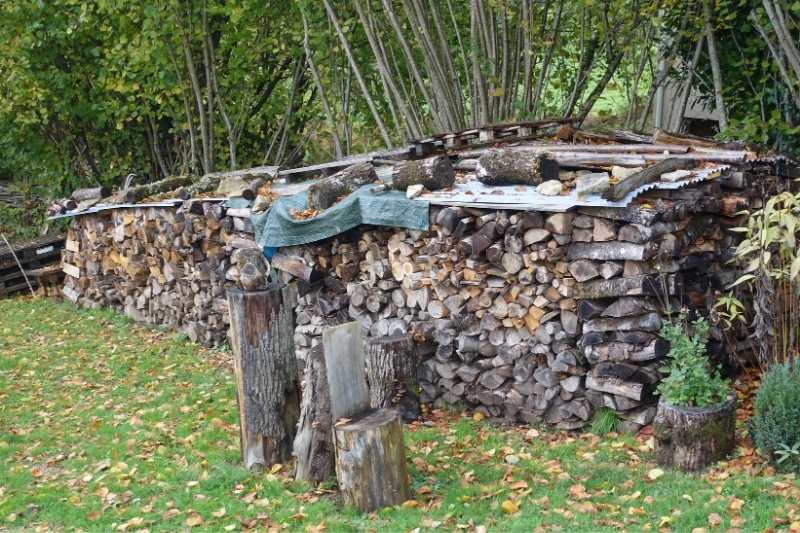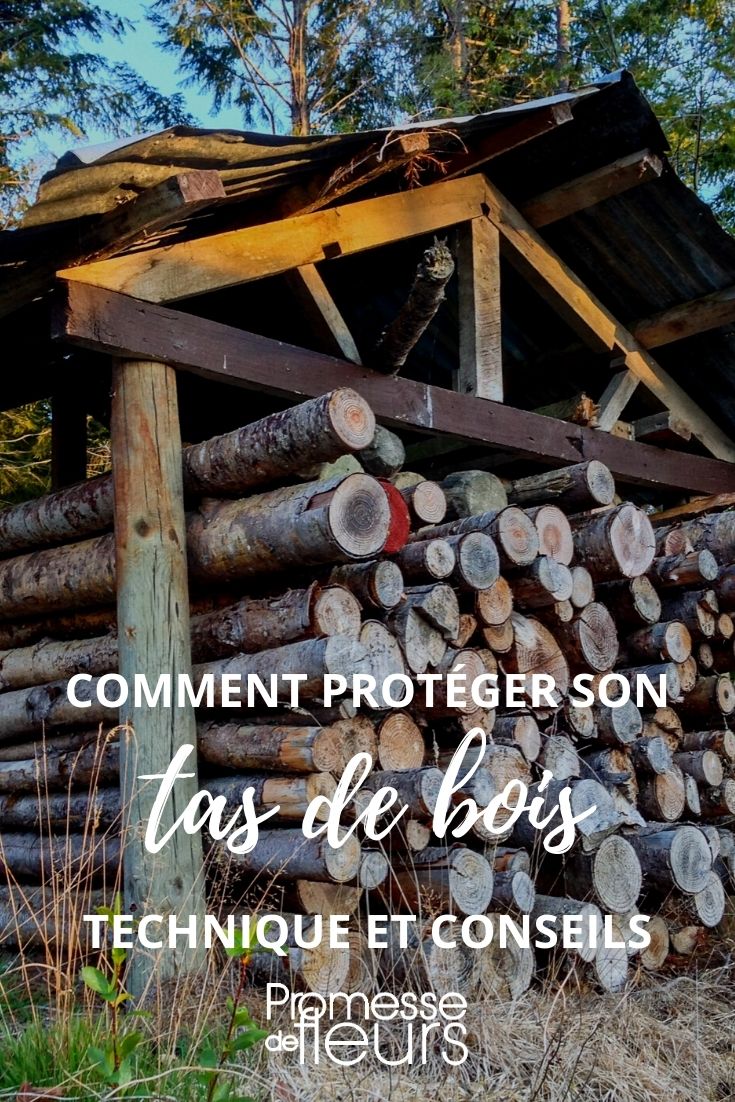When a man cuts wood, it means winter will be cold! And... that it will need to be stored! The quality of firewood partly depends on its storage conditions. Only dry wood will provide satisfactory heating. Wood that has been cut and stacked must finish drying under proper shelter in the best possible conditions so it can be burned when winter arrives. To protect the wood from moisture, several solutions are available.
Discover our tips for a well-sheltered woodpile and optimal log drying!

Once the wood is split... it must be properly dried
Why protect your woodpile?
The moisture content determines the wood's efficiency and calorific value. The drier it is, the better it burns and the more heat it produces! Wood is considered dry when its moisture content is below approximately 20%. Wood that is too damp burns poorly, provides insufficient heat during combustion, tends to smoke, releases harmful substances, and clogs stove and chimney flues. To avoid combustion problems related to moisture, it is essential to allow sufficient drying time before burning (between 1.5 and 2 years) and to store it properly so it can dry adequately. Stacking wood aids drying; it allows air to circulate well around each log.

For good efficiency in your fireplace or stove, your wood must be well dried
When to protect a woodpile?
To obtain good-quality firewood, it is best to cut (or bring in) the wood in spring or summer and store it under shelter from the elements as soon as possible. However, a pile of cut and split wood can remain outdoors for a few days during the warmer season for pre-drying. Leave it exposed to the sun to reduce drying time.
How to effectively protect your woodpile?
To dry properly, a woodpile must be protected from all possible sources of moisture: rain, bad weather, and ground moisture. The ideal storage for a woodpile is outdoors under a shelter, either permanent or improvised, ensuring sufficient ventilation. Sunlight and air are the two essential elements for good drying. Air must circulate to prevent mould, fungi, and wood deterioration. Several options are available:
- A wooden shed, lean-to, or log store: this is the ideal solution! They protect the wood while allowing air circulation and rainwater drainage.
- Corrugated sheets placed and weighted with bricks or stones on top of the woodpile can also serve as a shelter. When heated by the sun, they store heat and release it to the wood, promoting drying. They also allow rainwater to drain, provided they are sufficiently inclined.
- If you don’t have such a structure to shelter your logs, fully waterproof protective tarpaulins can also easily and effectively protect a firewood pile.

A wooden shed is undoubtedly the best option
What type of tarpaulin?
Choose protective tarpaulins made of LDPE (low-density polyethylene, 90g/m² to 120g/m²), highly resistant to mechanical shocks and bad weather, to optimally protect your woodpile.
Fully waterproof and watertight, our Protex Wood and Protex Extra tarpaulins protect firewood from external elements, rain, and bad weather.
Sun exposure reduces the lifespan of tarpaulins by weakening them. With UV-resistant treatment, our tarpaulins will retain all their qualities and effectiveness for several years, depending on the model, from 2 to 5 years minimum.
Some models have a specific size (1.70 m wide by 8 m long or 1.50x6m), perfectly suited for protecting a firewood pile.
How to secure it?
Ensure the woodpile is not completely and hermetically covered; leave the sides open to allow air circulation. This prevents moisture from stagnating under the cover and the appearance of mould and fungi on your logs.
Another tip: secure it with a slight slope so rainwater does not pool on top of the woodpile. You can place stones to hold the tarpaulin, but we recommend securing it more firmly.
Our tarpaulins are quick and easy to install and remove! They feature eyelets every metre.
Place your protective tarpaulin over your log pile, with flaps of about 30-40 cm on all sides. Secure it using an elastic cord or tension strap threaded through the eyelets and fixed to the ground at regular intervals. For example, use tent pegs or metal mulch staples for this purpose.
After use, once the woodpile is depleted, simply fold your tarpaulin and store it away from sunlight and bad weather.

Tarpaulins combined with metal sheets ensure good drying of your wood



































Comments